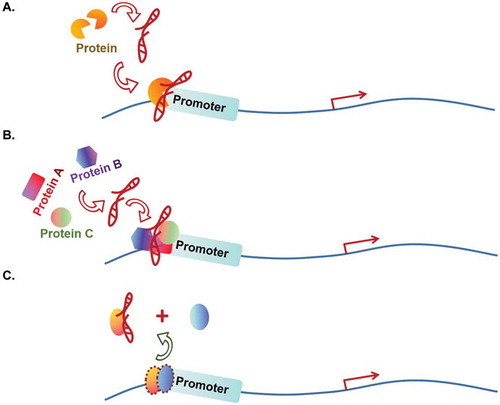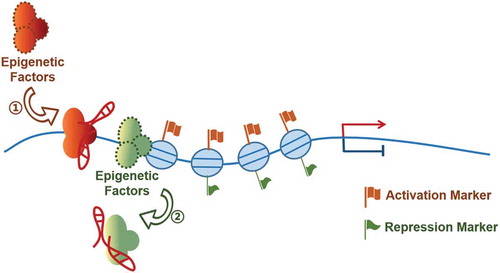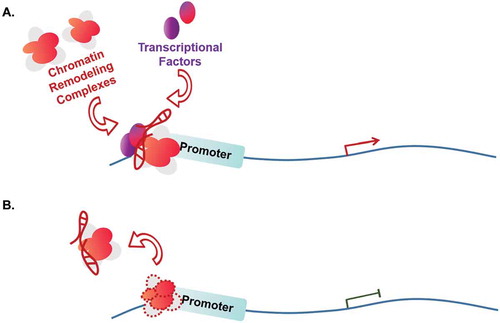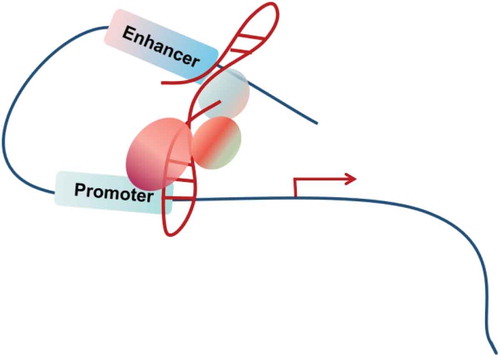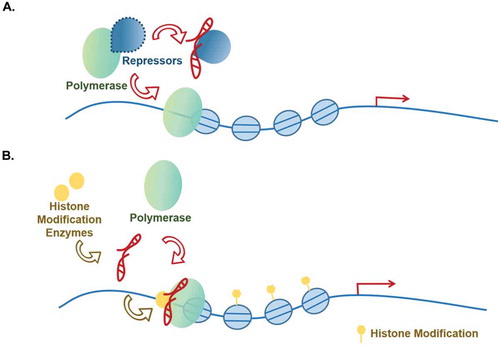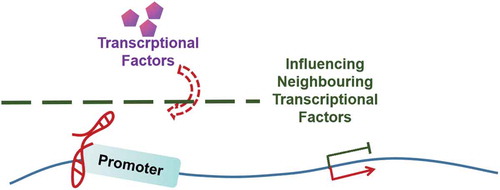Figures & data
Table 1. Association with transcriptional factor (TF).
Table 2. Modulating DNA methylation or histone modification enzyme.
Table 3. Influencing on chromatin remodelling complex.
Table 4. Facilitating chromosomal looping.
Table 5. Interaction with RNA polymerase.
Table 6. Direct association with promoter.
